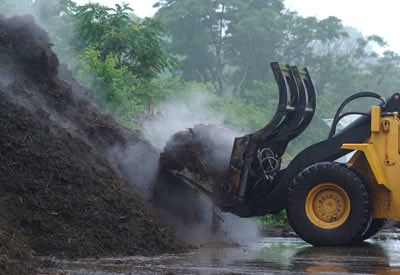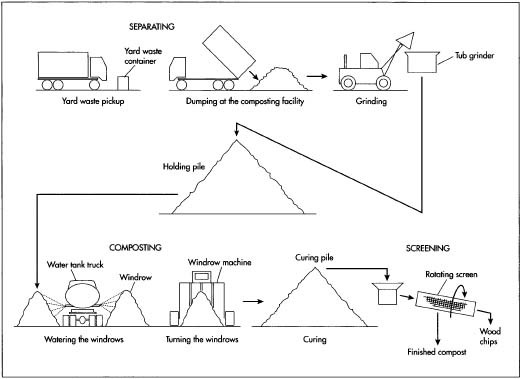Aerobic Composting
If you’d like to compost at home here are some helpful ideas on how to do it and suggestions on composting options:
Tips for successful composting
Here’s an Asian method called Bokashi. This composting system needs temps above 60ºF to work well but is a great solution, even for apartment dwellers because there is little to no smell.
Bokashi composting
For more information and great composting ideas visit this Cornell website
In aerobic composting, oxygen is used to accelerate the decay of organic material into compost. When free of contaminants, it is an excellent soil fertilizer as it increases its humus content. The process involves collection of feedstock, grinding of large woody material into smaller chips, and processing on concrete pads that trap any water runoff. Microbes break down the organic material. They thrive in an environment of 55% moisture, a 30:1 carbon to nitrogen ratio and with good airflow. The incoming feedstock is blended to create the ideal C to N ratio. The compost piles are monitored for temperature, moisture, oxygen and porosity to maintain optimum conditions. The compost will cook at 140-170°F for a pathogen reduction phase during which it is turned to aerate and ensure even heating. This is known as the pathogen reduction phase. It helps kill weed seeds and destroys fertilizers found in lawn grass. After this phase the compost goes through aeration and curing phases. The final product is screened before being ready for market. Aerobic composting can be done in either an open or closed system.
Closed or in-vessel composting is done in a closed environment. This can be a rotary drum or a large stainless steel lined container. The advantages of in-vessel composting are tighter control of temperature, odors, rodent control and the ability to compost meat and dairy products. Typically closed composters create compost quicker than open static piles.
Compost facilities can be large or small and there are different methods used for composting depending on the size of the facility and requirements. Cedar Grove is an example of a very large composter, but in WA state and around the country there are also community composting sites that are much smaller scale. An example would be at Midnight’s Farm on Lopez Island. A smaller-scaled system would work best for Vashon.
https://www.midnightsfarm.com/compost
Island Composting Benefits:
- large reduction of valuable waste stream going off island
- organics, soil, and water remain on island making healthier soil and healthier plants
- improves soil’s ability to sequester carbon
- reduces pesticide usage and synthetic fertilizer dependencies
- increases drought resistance
- reduces greenhouse emissions
- reduces Puget Sound water contamination
- it’s good economics
Benefits of Composting – University of Michigan
Here’s a short video from the Cedar Grove Composting website. This is where island yard and food waste currently goes for conversion into compost.


